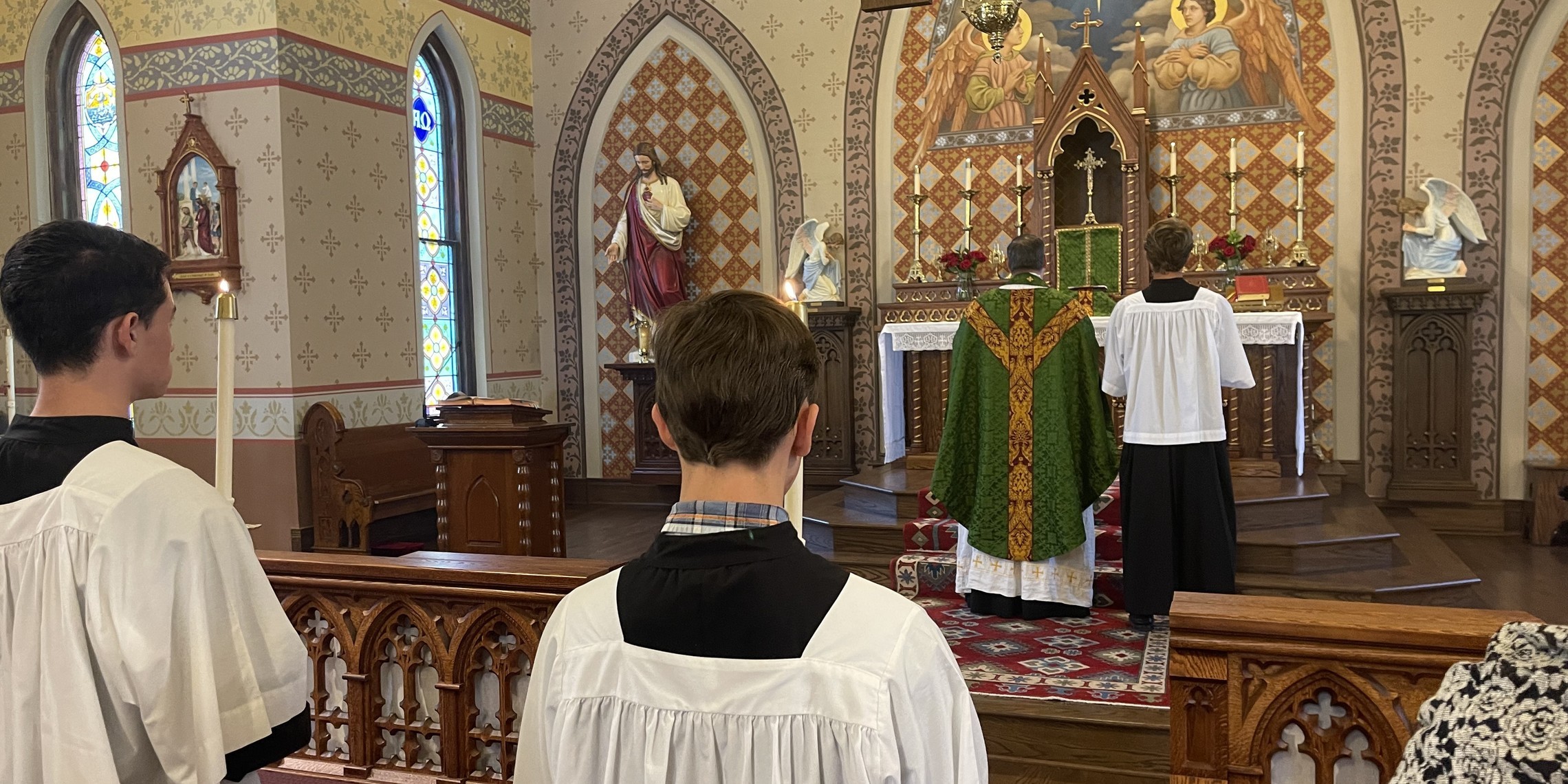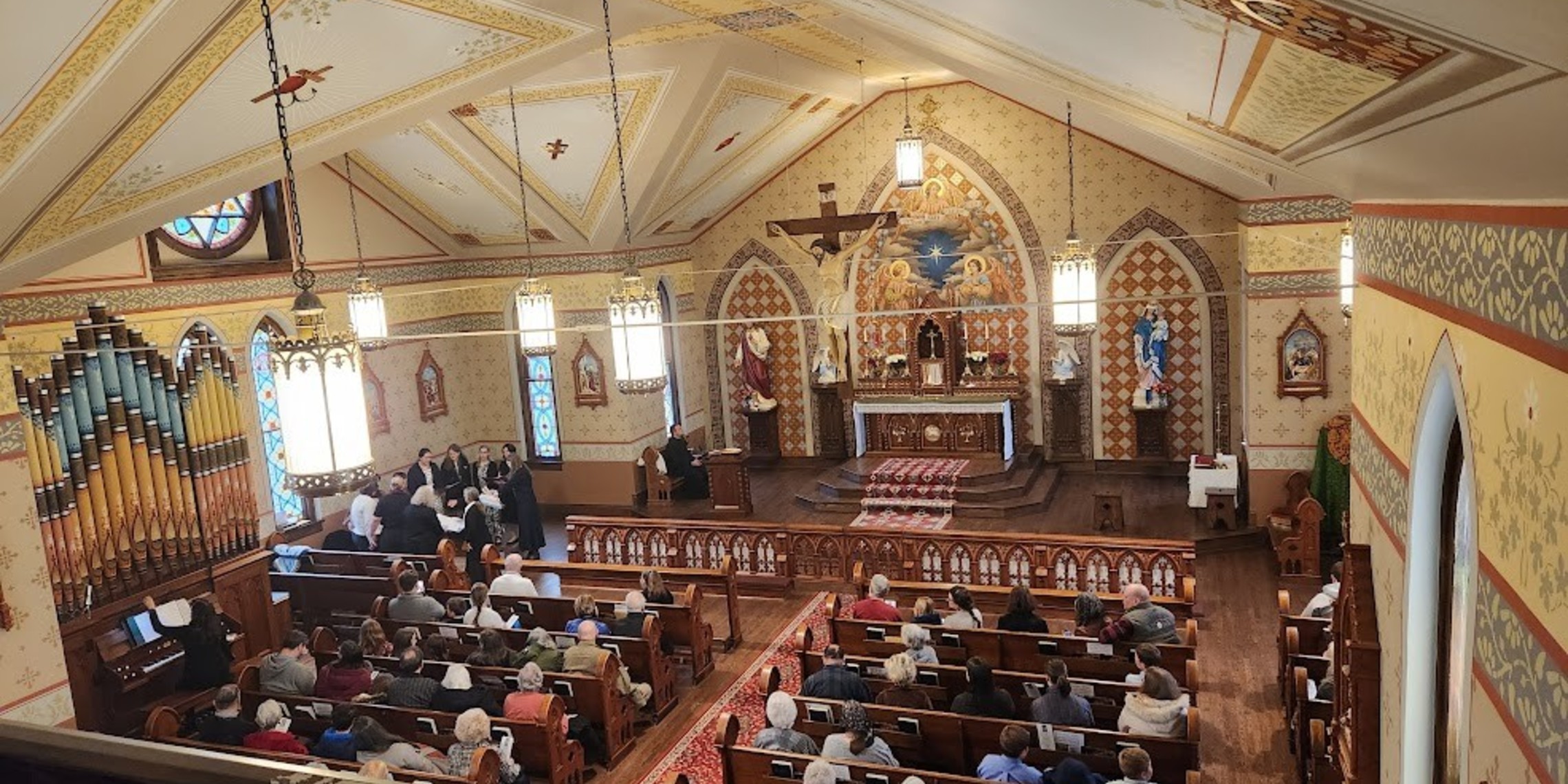While authentic worship of God is a mystical experience (it does not nor should not read like a didactic instruction manual), the goal of worship is not to be confused. Rather, it is to be drawn into the worship of Almighty God Who we seek to contemplate and adore, and Who is never-ending in His richness and depth! We are changed by our worship of God. That being said, from time to time, I will write a brief explanation of our ceremonies so that not only do you learn and have an appreciation for the what and the why of our sacred tradition, but also so that our practices don’t simply become another fad or preference of a particular priest. In this way, we stand ready with educated explanations rooted firmly in the authentic tradition of our ancestors and not merely in personal life experience or even a particular decade that we’ve lived through. The Church spans space and time and has an eternal element to it—our worship should be timeless and bigger than us!
One of the options that we began last Advent was the sprinkling rite before Mass. After the Processional Hymn, which we sing as the priest and servers process down the aisle, we have been singing a Gregorian Chant melody while I sprinkle you with water. Some may have asked themselves, “What’s the point of all of this? Why is something like this important to Catholic worship?”
Since the early church, water and oil have been blessed as sacramentals (physical articles or artifacts of nature which are sanctified and redeemed apart from the fallen world to help us grow in grace and faith). As early as the fifth century, we find the church banishing demonic influence from the elements of water and oil and asking God to bless the articles for use in our healing and spiritual health. The use of holy water in the early church was actually attributed to the Apostle St. Matthias who replaced the traitor, Judas. We know, then, in the early Church, the faithful used this sacramental blessed and exorcised by a bishop or priest, especially on Sundays.[1] Holy water is exorcised of demonic power as well as the salt that is added into the water in the shape of a cross. You are encouraged to use this sacramental at home.
Over time, at least since the 10th century, the faithful were sprinkled with this water before the principal Mass on Sunday in an effort to do what is described above from the fifth century blessing—sanctify us, prepare us for the reception of the Eucharist by forgiving our venial sins, drive away demonic forces from our building and our persons, and give us a grace-filled heart and mind to enter into the Sacrifice of the Mass. This ceremony was called the Asperges me coming from Psalm 50 which reads:
Sprinkle me, O Lord, with a hyssop and I shall be purified, wash me and I shall be whiter than snow. Have Mercy on me, O God, in Your Kindness, Glory be to the Father...etc.
The closing prayer of this pre-Mass ceremony implores God to send forth the guardian angel of the individual place (in this case, our church building) to protect, defend and visit all who are in this dwelling. This is how we prepare for Holy Mass—in a penitential spirit, ready to confess our sin before the altar of God, that we might ascend with the priest into the holy space, offer God our adoration, and, in turn, be sanctified. We know, as well from the Book of Exodus, that the hyssop branch (which is similar to Middle Eastern rosemary or thyme) was used to mark the lintels of the doors during the tenth and last plague of Egypt wherein the angel of death descended upon those whose doors were unmarked. God instructed Moses to take the blood of the Passover Lamb and make a sign over the lintel posts, that the first-born male of each family might be protected. Hyssop also had a medicinal purpose to heal leprosy and breathing issues in the Biblical world, much as did frankincense as well. As we gather for Holy Mass and use holy water, we should call to mind these realities before us—knowing that we are marked as belonging to Christ and are safe when we are in this holy place.
... During the Easter Season only, this antiphon changes, but only for the 50 days of the season. Instead of “Sprinkle me, O Lord, with a hyssop,” we have what is called the Vidi Aquam.
Literally, “I saw water flowing from the right side of the Temple, Alleluia. And all to whom this water came were saved, and they shall say, Alleluia, Alleluia.”
This text comes from the Prophet Ezekiel (47:1) who sees a vision of water gushing forth from the Temple to cleanse the world. In ancient Rabbinic Judaism, the understanding was that holy of holies in the Temple was the center of the world and even creation for that matter—the rock of Abraham, the origin of the flood—it had a cosmic significance that transcended space and time. Water signified death and destruction, chaos, and the Flood and even a boundary between slavery and freedom (Exodus). In the New Covenant, Jesus sanctifies the water for our baptism in order that we might receive Him, Who is the New Paschal Lamb. In the Easter season, we use water blessed with the Paschal Candle at the Easter Vigil. The Easter or Paschal Candle represents the Risen Christ among us in our midst, and at the Vigil, it also represents the Presence of God as manifested the pillar of cloud and column of fire in the desert which the Israelites followed out of Egypt. This water is called Easter Water.
In the Gospel of John, Jesus mysteriously tells us that His Body is the New Temple which will be raised in three days.[2] We then witness in the same Gospel the soldier pierce Jesus’ side with a lance after He expires on the cross causing Blood and Water to run forth from His right side—Jesus is the New Temple! The streams that come forth from the crucified Lord represent Baptism and the Eucharist, the lifeblood of the Church and of our salvation. Truly, in order to enter into the Sacrifice of the Mass, there is no better sacramental preparation than to be washed in the very water which flows from His pierced side that we might worthily prepare to receive His Most Holy Body and Precious Blood.
Whether we are in the Easter Season also called Paschaltide or the rest of the year, this use of Holy Water prepares us and our little temple in Plattsburg to receive the Living God among us worthily and well.
[1] Apostolic Constitutions (Book VIII). “Concerning the Blessing of Water and Oil—the Constitution of Matthias.” Section 4. Number XXIX. Newadvent.org.
[2] Jn 2:21
More News...
Final Sermon at St. Ann June 30th, 2024
.... In this last sermon I will give you before leaving for St. Andrew and my next journey, I would like to reflect upon...Read more
Rededication Mass Sermon
I would like to begin this evening with gratitude. Gratitude to all of you, the parishioners of St. Ann, for cooperating with the grace...Read more


